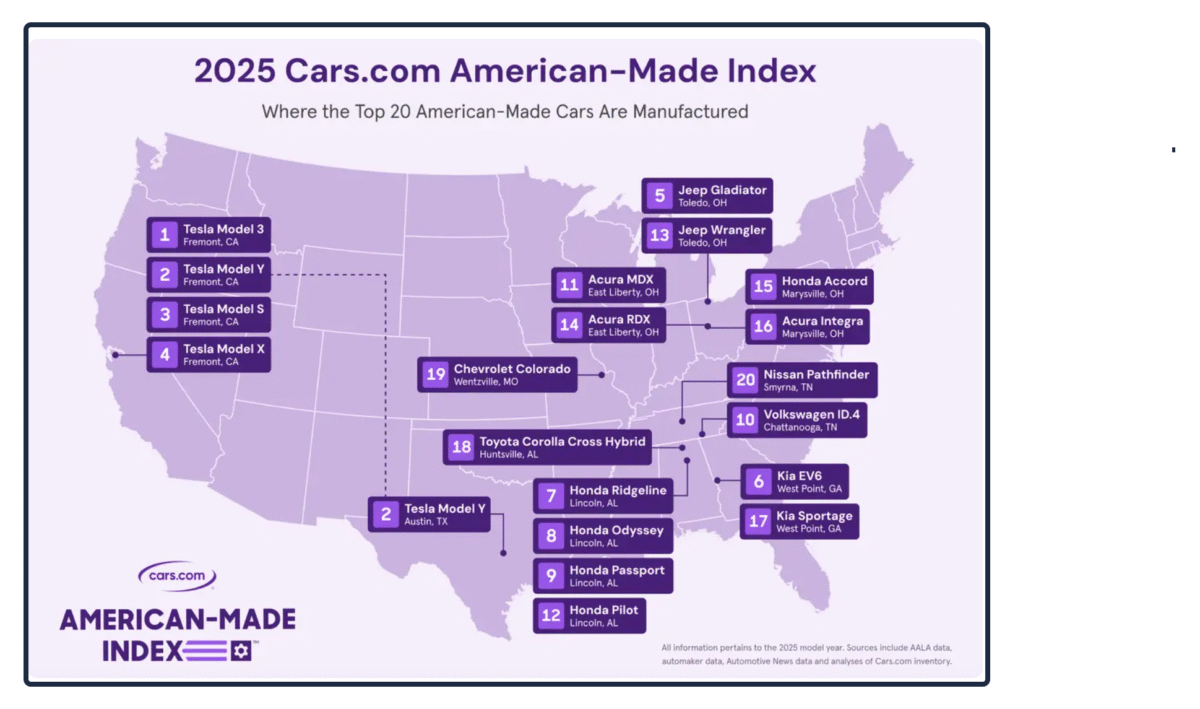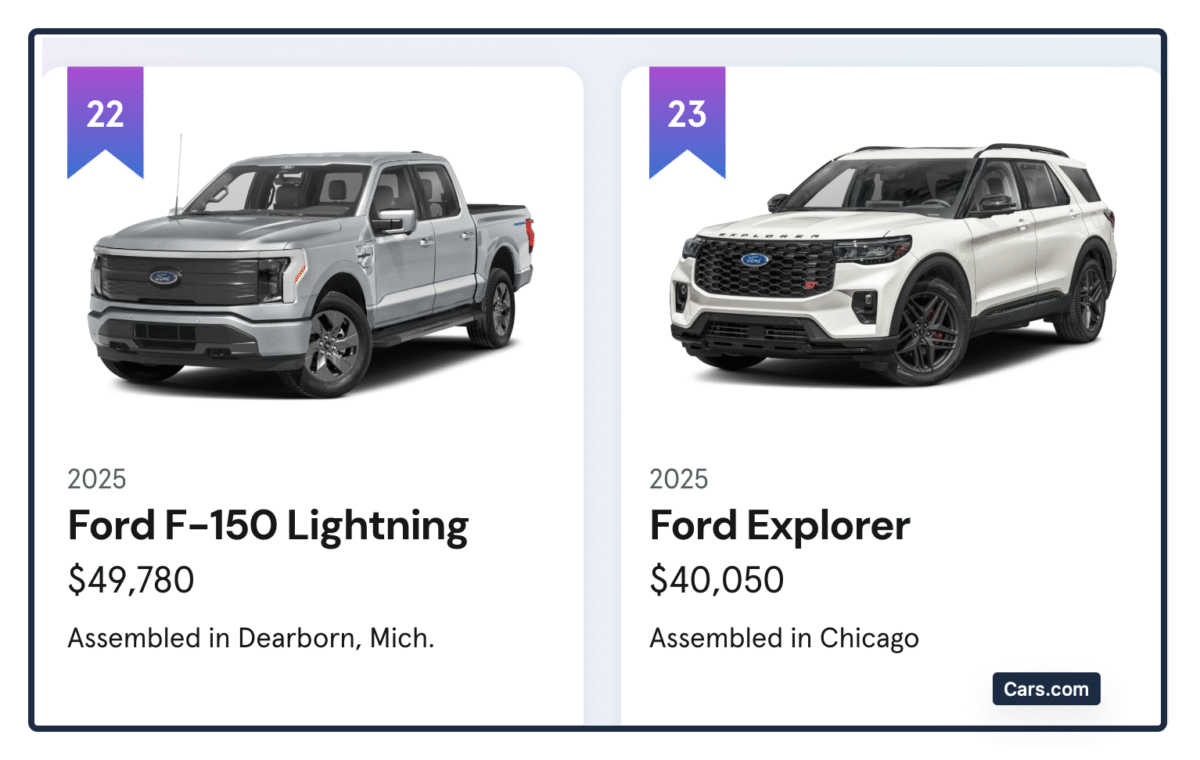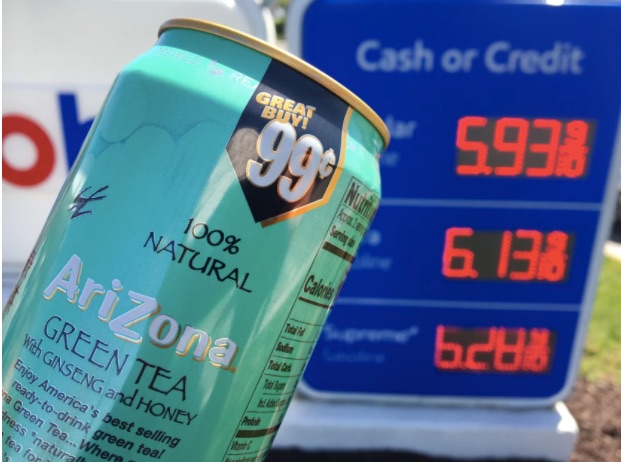
Coke’s Sweetener Decision
August 7, 2025
August 2025 Friday’s e-links: A Fantastic Feel-Good Film
August 8, 2025For cars, it can be tough to guess an “American-made” rank.
At Cars.com, the top 20 include manufacturers based in the Netherlands, Japan, South Korea, and Germany:

Meanwhile though, among the car companies based in the U.S., we just have Tesla in the first four slots and Chevrolet at number 19. I should note that yesterday’s Wall Street Journal, told us that Ford “makes more vehicles in the U.S. than any other automaker.” So, while WSJ implied Ford had the most all-American cars, Cars.com had no Fords in its “American Made” top 20. (The disagreement is a perfect example of why ranking “facts” depend on criteria.)
At Cars.com, Fords were #s 22 and 23:

To qualify as American Made by Cars.com, vehicles like the Honda Ridgeline (#7), Odyssey (#8), Passport (#9), and Pilot (#12) had to have satisfied five criteria:
- Location(s) of final assembly (of the light-duty vehicles that compose the Index)
- Percentage of U.S. and Canadian parts
- Countries of origin for all available engines
- Countries of origin for all available transmissions
- U.S. manufacturing workforce
Our Bottom Line: Comparative Advantage
Taking a bit of a leap, as economists, we can conclude with David Ricardo.
The economist who first explained comparative advantage, David Ricardo (1772-1823) said each nation should make the goods and services for which it has the lower opportunity cost and import what it does not produce. Because of those imports, consumers would enjoy lower prices and more variety. Benefitting also, exporters have larger markets that supported the efficiencies of economies of scale.
By emphasizing “American Made,” the U.S. will be less able to benefit from comparative advantage.
My sources and more: Thanks to yesterday’s WSJ for reminding me it was time to return to “Made-in-the-USA.” Then, we looked at our past American made post and of course, Cars,com for its Index.
![econlifelogotrademarkedwebsitelogo[1]](/wp-content/uploads/2024/05/econlifelogotrademarkedwebsitelogo1.png#100878)




